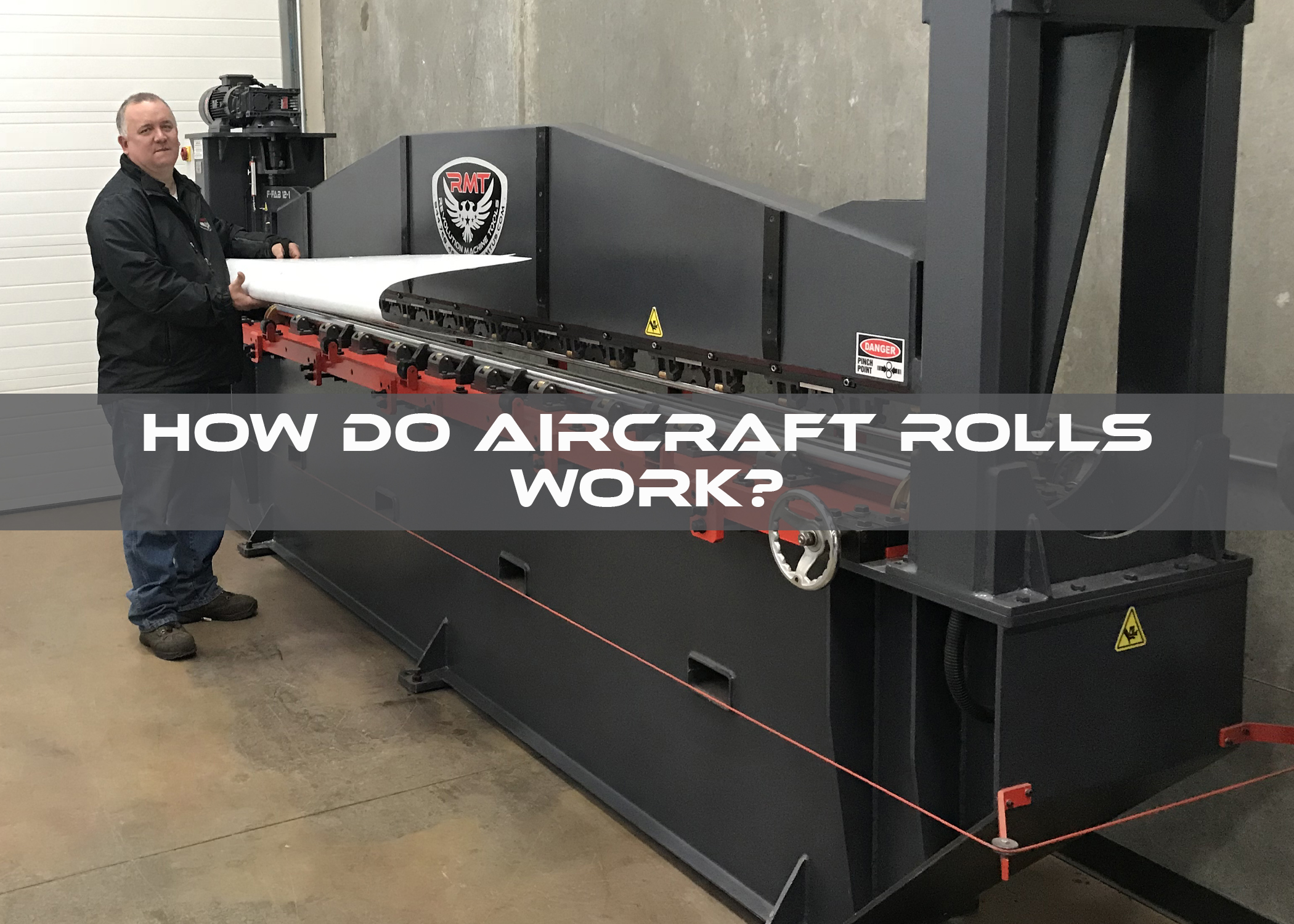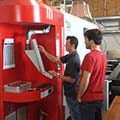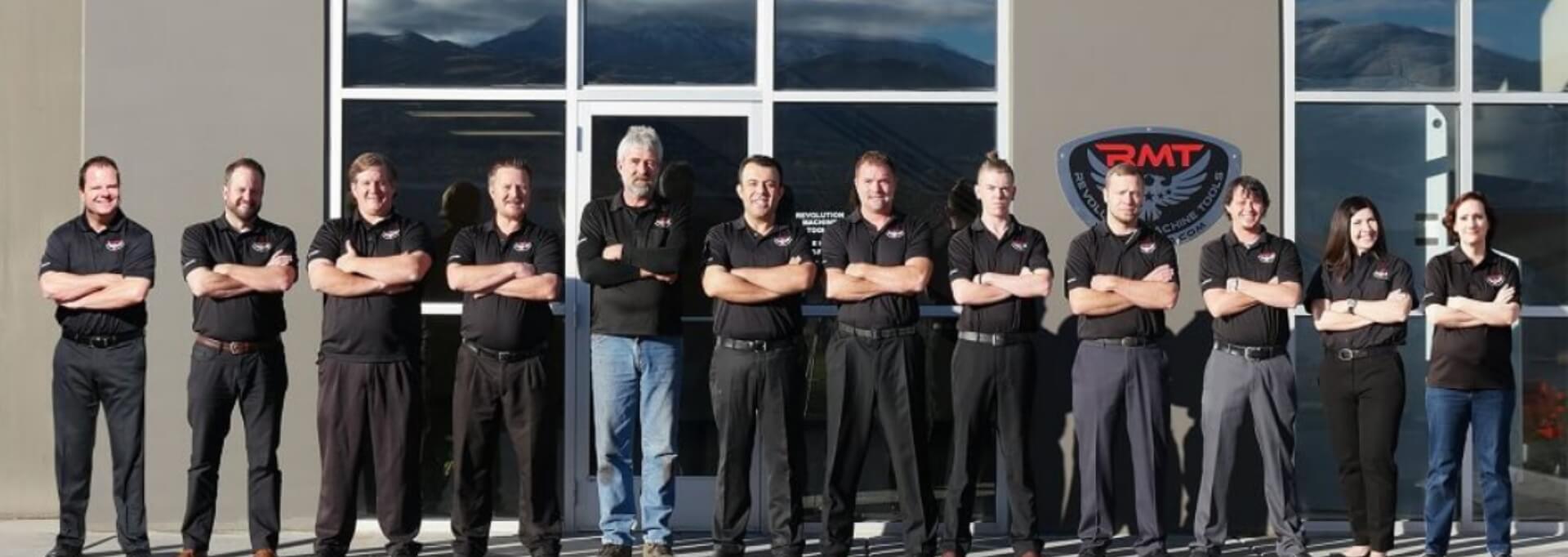Recently, a non-fabricator was asked if they knew what an aircraft roll was. “Sure, that’s when a moving plane rolls upside down and continues on until it’s upright again.” While airplanes are involved, within the metal fabrication industry the term “aircraft roll” means something a little different.
Aircraft rolls are specialized machines used in the manufacturing of aircraft wing edges, playing a crucial role in shaping and forming precise aerodynamic surfaces. These machines ensure that aircraft wings meet strict industry standards for performance, durability, and efficiency. Without aircraft rolls, the aviation industry would struggle to produce the high-quality wing components necessary for safe and efficient flight.
Aircraft manufacturing requires precision, and the role of aircraft rolls in shaping wing edges cannot be overstated. These machines streamline production, enabling manufacturers to form metal sheets into precise aerodynamic shapes, reducing the need for manual labor and increasing consistency. The automation and control provided by aircraft rolls help ensure that every aircraft component adheres to strict industry regulations and safety standards, making them indispensable in modern aerospace manufacturing.
The Functionality of Aircraft Rolls
Aircraft rolls are designed to shape and bend metal components of aircraft wings, ensuring proper curvature and structural integrity. These machines use a combination of rollers, hydraulic pressure, and automated controls to produce precise wing edge profiles. The rolling process is carefully controlled to prevent material deformation or weakening, ensuring the final product maintains the required strength and aerodynamics.
The rolling process involves feeding sheet metal through a series of rollers that gradually bend and form the material into the desired shape. The use of multiple rollers ensures uniform bending, reducing the likelihood of defects. This method ensures consistency, reduces material waste, and enhances the structural strength of aircraft components. Furthermore, modern aircraft rolls incorporate sophisticated sensors and feedback mechanisms to make real-time adjustments, further improving precision and efficiency.
The Evolution of Aircraft Rolls
Aircraft roll technology has evolved significantly since the early days of aviation manufacturing. Initially, wing components were manually shaped using rudimentary tools, but advancements in rolling technology have led to increased automation and precision. Early aircraft relied on handcrafted metalwork, which, while effective, was time-consuming and prone to inconsistencies. The introduction of industrial rolling machines revolutionized the manufacturing process, enabling faster and more reliable production.
During World War II, the demand for aircraft production surged, prompting manufacturers to develop more efficient rolling machines. The aviation industry needed to produce large numbers of aircraft in short periods, requiring more reliable and faster manufacturing techniques. The introduction of hydraulic and CNC-controlled rolls in the late 20th century further enhanced precision and repeatability, making mass production of aircraft components more feasible. These technological advancements allowed manufacturers to produce complex wing designs with greater efficiency and consistency.
Today, aircraft rolls are an essential part of modern aerospace manufacturing, enabling the production of high-performance aircraft with advanced aerodynamics. The continued evolution of rolling technology, including advancements in automation and materials science, ensures that the aviation industry remains at the forefront of engineering and innovation.
Applications of Aircraft Rolls
Aircraft rolls are used in a variety of aerospace manufacturing processes, playing a critical role in shaping the components that make flight possible:
- Wing Edge Formation: Precisely shaping leading and trailing edges of aircraft wings to meet aerodynamic standards. Properly formed wing edges reduce drag and enhance fuel efficiency.
- Fuselage Component Production: Rolling metal sheets to form curved fuselage sections. The fuselage must be both lightweight and structurally sound and rolling machines help achieve this balance.
- Maintenance and Repairs: Reworking aircraft components to restore their original shape and functionality. Over time, aircraft components may experience wear or deformation, and rolling machines allow manufacturers and maintenance teams to repair and reshape these parts as needed.
- Composite Material Rolling: Some modern aircraft rolls are adapted to handle advanced composite materials used in next-generation aircraft. As aerospace manufacturers increasingly use composite materials to reduce weight and improve fuel efficiency, specialized rolling machines ensure these materials maintain their intended shapes and strengths.
The Future of Aircraft Rolls
As aerospace technology continues to evolve, the role of aircraft rolls will expand to accommodate new materials, more complex designs, and higher manufacturing demands. Innovations in artificial intelligence (AI) and machine learning are being integrated into CNC-controlled rolling machines, allowing for real-time monitoring and adaptive adjustments. These advancements help further enhance efficiency and precision, reducing production costs and increasing overall reliability.
Additionally, the growing demand for sustainable aviation solutions is influencing aircraft roll technology. As manufacturers seek to reduce waste and improve energy efficiency, rolling machines are being designed to optimize material usage and reduce environmental impact. Future developments may also include additive manufacturing techniques that integrate rolling processes with 3D-printed metal components, providing new possibilities for aircraft design and production.
Shape the Skies
Aircraft rolls are vital machines in the aerospace industry, ensuring that wing edges and other components meet stringent performance and safety requirements. Their evolution from manual forming techniques to advanced CNC-controlled systems highlights the importance of precision manufacturing in aviation. By shaping metal and composite materials with unmatched accuracy, these machines help create aircraft that are safer, more efficient, and capable of meeting the rigorous demands of modern air travel.
As aircraft technology continues to progress, aircraft rolls will remain a cornerstone of high-quality aerospace production. With ongoing advancements in automation, AI integration, and sustainable manufacturing practices, the future of aircraft rolls promises even greater efficiency and innovation. Whether producing commercial airliners, military jets, or cutting-edge aerospace vehicles, these machines will continue to shape the skies for generations to come.







